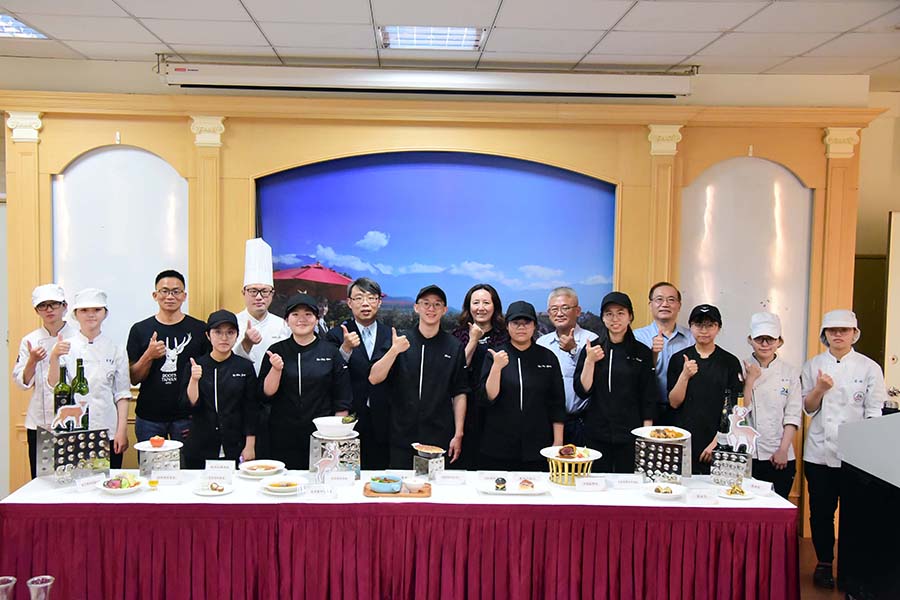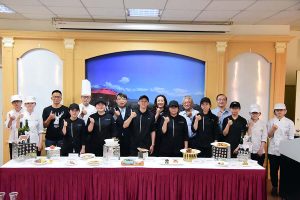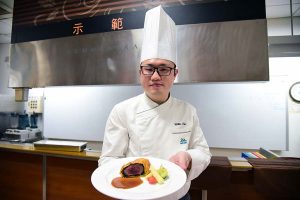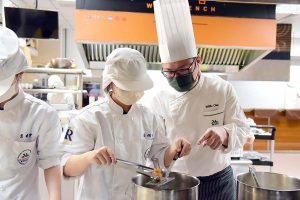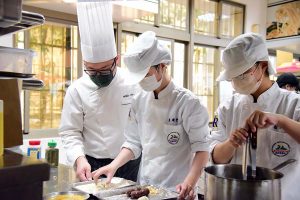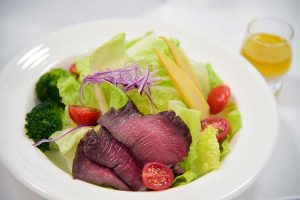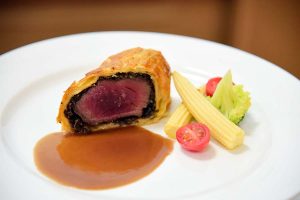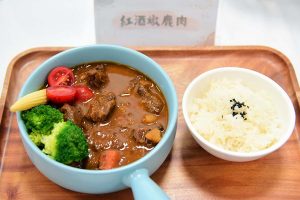In an effort to help out venison ranches in Taiwan, the NPUST Department of Hotel & Restaurant Management and Department of Animal Science have teamed up to develop new value-adding venison products. Using various cuts of meat from the Formosan sambar deer, the team came up with a variety of appealing recipes. A total of 14 dishes were created, including three appetizers, two soups, seven main courses and two side dishes. On March 16th, at 12:30 a results presentation was held at the Department of Hotel & Restaurant Management. Foreman Wen-Tsong Su of the Fu Cheng Deer Farm, Director Chung-Jen Wang, Professor Yen-Lun Su and Assistant Professor Wei-Ting Chao of the Department of Hotel & Restaurant Management, and Associate Professor Chih-Ming Chen of the Department of Animal Science were invited to evaluate the products.
Director Chung-Jen Wang said “Associate Professor Chih-Ming Chen from the Department of Animal Science recommended the idea of specialty venison dishes to Foreman Wen-Tsong Su of the Fu Cheng Deer Farm. He then provided venison to our department free of charge to conduct special research and development. The objective is to add value to venison while also helping students improve their professional ability to develop new dishes.” Professor Yen-Lun Su explained that “students used different cuts of venison to develop special dishes which don’t follow traditional methods. In this way, the students were able to diversify their cooking approach.”
The special project allowed students to be creative with different parts of venison and find suitable cooking techniques to bring out the features of this high protein, low fat and low cholesterol meat variety. One of the dishes was a Japanese-style venison ramen which used deer bones to make the broth, and deer flank instead of pork. The result was considered superior in taste to traditional pork ramen. A French venison consommé was also developed using deer bones rather than bullion or chicken stock to create the broth, and venison for the meat. In this way, the minced meat left over from cutting could be used up to reduce overall kitchen waste. Venison Wellington was created using deer filet covered with mushroom stuffing then wrapped with puff pastry. Crispy on the outside and tender on the inside, it made for a delicious innovation to the traditional Wellington approach.
The students participating in the special project attended deer anatomy classes at the Department of Animal Science, where they learned about the different parts of venison. They also learned about concepts of sustainability that apply all the way from production through to the dinner table. In the future, some of the dishes they created can be developed into vacuum packs or specially packaged products. Through technology transfers, the school can help deer farms increase the economic value of their venison, while also promoting consumption of venison to the public as an alternative source of protein.



